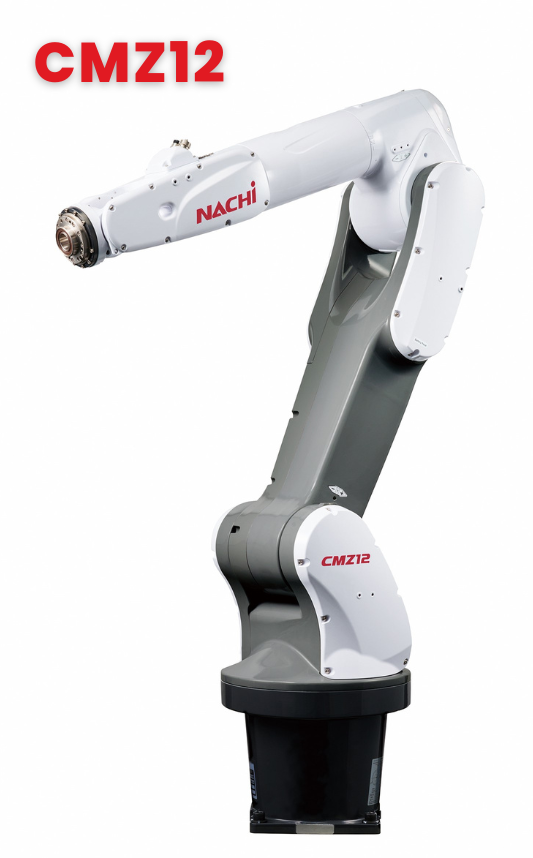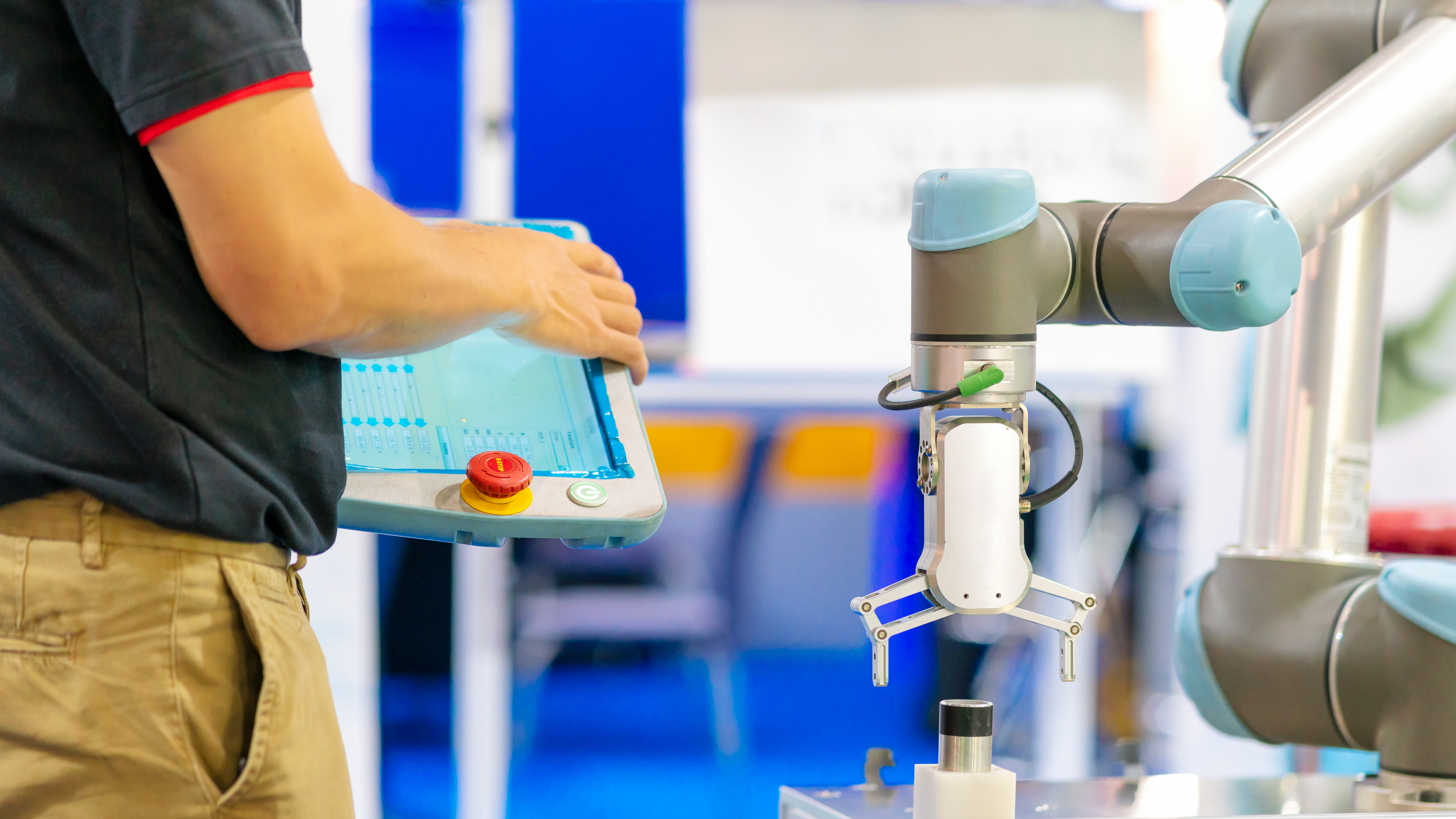Nachi-Fujikoshi Expands Cobot Line-Up, Emphasizes Speed and Precision
Nachi-Fujikoshi has released a 12 kg CMZ collaborative robot capable of motion speeds up to 1,000 mm/sec in collaborative mode and up to 3,000 mm/sec in non-collaborative mode.
Beginning in 1928 as a manufacturer of cutting tools for industrial manufacturing, Nachi-Fujikoshi has become a global supplier of bearings, hydraulic equipment, specialty steels, and robots. Nachi-Fujikoshi’s line of robots is designed for material handling, palletizing, and spot welding. Recently, Nachi-Fujikoshi has expanded its line of collaborative robots to include a model with a bigger payload, longer reach, and higher speeds.

Nachi-Fujikoshi’s new CMZ series robot, the CMZ12, features a 12 kg maximum payload and a 1214 mm maximum reach. Image courtesy of Nachi-Fujikoshi
CMZ12 Collaborative Robot
Collaborative robots, or cobots, are industrial robots that can work alongside humans without the risk of injuring human workers. The cobots often run much slower than common industrial robots, meaning they can be less productive. To counter slower cobot speeds and ensure efficiency, Nachi-Fujikoshi has prioritized high speed and accuracy in its new cobot.
Built on the CMZ05 platform, the CMZ12 collaborative robot is a small form factor robot with a maximum collaborative speed of 1,000 mm/sec and 3,000 mm/sec in non-collaborative mode. The CMZ12 also features a repeatability of ±0.025 mm.

The CMZ12 includes various design features to ensure worker safety. Image used courtesy of Nachi-Fujikoshi
Safety First
Because cobots work alongside humans without any safety fences, the outer design of the robot arm is very important. International safety standards ensure that clothing or appendages cannot get caught within the robot's joints, and the CMZ12 cobot adheres to these standards.
The payload and reach of a robot dictates what function the robot will play within your factory. The CMZ12 has an operating payload capacity of 12 kg and a maximum reach of 1,214 mm.
Mounting tools or grippers on the end of a robot allows the robot to operate in the physical world, and wires and hoses make these tools work, but they can interfere with robot motions or humans. The CMZ12 has all the pneumatic and wiring connections at the hollow wrist, which minimizes excessive cable and hoses runs along the robot arm.

Cobots can work alongside humans without safety fences thanks to design features that prioritize safety. Image used courtesy of Adobe Stock
Collaborative Robot Safety
A cobot doesn't require any additional safety systems or sensors; each cobot uses internal sensors to determine if an external force is applied to the arm. This force could be an obstacle, a wall, or a human. The robot needs to sense the obstruction and immediately stop before the robot is damaged or someone is hurt. Force sensors are commonly used along with current monitoring of the servo motors to determine when an obstacle is present.
The stopping distance of a robot is the distance the robot travels from when the stop signal is issued to the robot to when the robot stops all motion. As the speed of the robot increases, so does the stopping distance. The CMZ series from Nachi-Fujikoshi is designed to travel up to 1000 mm/sec in collaborative mode while still maintaining accuracy and safety, meaning the cobot must have some fairly advanced high-speed processing controllers and heavy-duty brakes to stop that robot in time.

 Facebook
Facebook Google
Google GitHub
GitHub Linkedin
Linkedin








